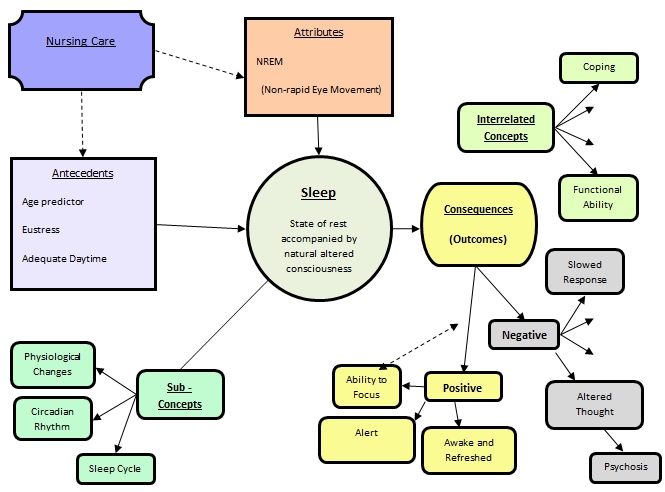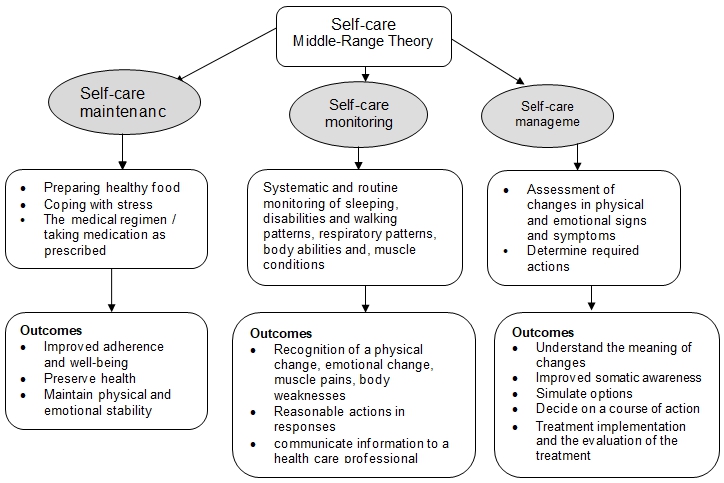This paper discusses Mark O’Brien’s experiences based on the film “Breathing Lessons: The Life of Mark O’Brien”. In short, Mark O’Brien contracted polio at a young age. He went through many challenges right from his childhood to adulthood. Challenges are associated with the disability he sustained from the disease.
Polio left some of his parts such as legs completely deformed affecting his walking gait. This paper will relate the concepts drawn from his story to theory. Two theories have been selected, which include grand theories and middle-range theory.
A list of all of the concepts that you identify as relevant to the nursing care of Mark
- Disability
- Progressive weakness
- Myalgia
- Fatigue
- Arthralgia
- Gait disturbances
- Muscle atrophy
- Respiratory problems
- Sleep disturbances, including sleep apnea
Select from your list, three concepts that you believe are related and provide a conceptual definition of each concept based on a review of the literature
The three selected concepts include disability, sleep disturbance and gait disturbance. LaRocco (2011) indicates that disability is a general term that reflects impairment and limit normal functions in individuals. According to LaRocco (2011), the degree of disability may differ depending what causes the change in some parts of the body.
According to Carney, Berry and Geyer (2011), sleep disturbance or disorder is a medical disorder affecting the sleep patterns of a person. Hallett (2006) defines gait disturbance as a deviance from normal walking. In nursing, watching patients walk is one of the most important aspects of the neurological examination.
Conduct a concept analysis for each of the three concepts based on course readings or other literature
The characteristics or attributes of disability in the case of Mark O’Brien, who contracted polio at a young age and survived to become a journalist, are challenges he faced when growing up particularly in social life. The outcome of Mark O’Brien’s disability includes six severe participation impairments.
For instance, Mark O’Brien could not work, engage in leisure activities, gain access to education and participate in family roles. Factors that influenced the level of disability in Mark O’Brien included the experiences he faced when he was still young while notable differences with other children influenced the level of disability.
For instance, the necessity to put on orthotic braces or devices, inability to play sports just like other children, at times even attending school at the healthcare center were some of the contributing factors. Cutcliffe and McKenna (2005) define antecedent incidents as cases leading to the chosen concept.
In the case of Mark O’Brien, disability occurred because of poor management of the disease. The environment was threatening because everything seemed to have been left to him alone. However, due to specialized treatment he received, the disability was not so worse. Otherwise, Mark O’Brien would have been crippled.
Attributes of disability in the case of Mark O’Brien, who contracted polio at a young age and survived to become a journalist, are challenges he faced when growing up. For Mark O’Brien, the factor that could have influenced the level of disability is the extent to which he suffered the disease. It affected him so much that he developed disabilities that lived with him to maturity. In fact, the outcomes of disability in his case were the difficulty in moving around, having challenges moving alone and stigma associated with deformity.
Hallett (2006) defines gait disturbance as a deviance from normal walking. In nursing, watching patients walk is one of the most important aspects of the neurological examination. Hallett (2006) indicates that normal gait requires that all systems, including sensation, coordination, strength and functions work in an integrated manner.
In the case of Mark O’Brien, the attributes of the gait disturbance were emotional stress, physical exhaustion, and psychogenic speech disturbance. Other attributes included open and threatening environment. The outcomes included self-discovery, self-development, enhanced decision-making and quality of life.
Carney, Berry and Geyer (2011) described Mark O’Brien’s sleep disorders as serious enough to interfere with normal functioning of his body significantly. In fact, the outcomes of sleep disturbance were the interference of with his emotional and physical functioning.
Sleep is generally a condition of rest in which normal perception is changed. The examples under this concept include sleep deprivation, insomnia and sleep apnea. Antecedent elements in this case included age predictor, adequate daytime functioning, sufficient time, normal circadian rhythm and eustress.
There were some factors, which led to a lack of sleep in Mark O’Brien. These included environmental and emotional stress, medications and pain caused during medications. The outcomes resulting from this process are both positive and negative. Positive outcomes included ability to focus, always awake and refreshed and alert normal reflexes. Conversely, negative outcomes included slow response, psychosis and altered thought processes.

Discuss how concepts are the building blocks of a theory
Theory
Millon, Millon and Grossman (2013) refer to a theory as a form of related statements that give details about experiences in systematic ways. In addition, a theory provides an account of observed phenomena (Cutcliffe & McKenna, 2005).
Concepts
The development of a theory involves description of abstract experiences at higher levels. According to Cutcliffe and McKenna (2005), a concept reflects a wider term for referring to features, objects or experiences identified by names. The names are specifically constructed to categorize such experiences. Hallet (2006) considers concepts as major components of a theory. In other words, concepts are abstract reality.
LaRocco (2011) indicates that concepts are normally depicted in a manner that shows different objects and phenomena. For instance, the concept of disability is an abstract terminology that in reality may refer to a specific deformity on the patient or survivor. However, concepts could have different levels of construction. Therefore, there is always a need to organize concepts in the ladder of abstraction.
As such, in the concept ladder, the primary concepts become more hypothetical, less agreeable and general in scope. According to Hallett (2006), researchers consider both empirical variables and abstract levels in their works. Specifically, at the empirical level, scientific researchers “experience” reality.
It means that they usually observe the events and objects. In this case, the reality has been named as disability, which resulted from the polio disease. In most cases, researchers are particularly concerned with the observable environment or things. In other words, they are concerned with reality.
Researchers may change their perceptions of certainty into abstract statements. Therefore, theory deals with abstraction. Ideas are usually the essence of a theory and not the other way round. Furthermore, in isolation, concepts are not theories or hypothesis. Therefore, individuals can only construct theoretical concepts when they understand the relationship among various concepts. Abstraction, then, is an appropriate construction or a tool for theory building.
Write a statement that explains the development of your own middle range theory relevant to the case study of Mark and draw a conceptual map that illustrates how the concepts are related

Self-care middle range theory – a conceptual map
The conceptual map was based on self-care middle-range theory (Jaarsma, Riegel, & Strömberg, 2012). It recognizes that self-care is critical for managing the chronic illness of Mark O’Brien. Three areas of focus have been identified in the conceptual map. The essence of these self-care approaches is to maintain the health of Mark O’Brien through health enhancing practices and controlling illnesses.
Self-care maintenance would involve practices to enhance Mark O’Brien’s emotional and physical stability. The patient shall eat healthy diets, manage stress and adhere to strict medical prescriptions. As a result, Mark O’Brien would be able to have improved adherence and well-being, preserve his health and ensure favorable mental and physical health.
Self-care monitoring would ensure that Mark O’Brien engages in systematic and routine monitoring of sleeping, disabilities and walking patterns, respiratory patterns, body abilities and muscle conditions for the best health outcomes. Mark O’Brien must be able to recognize clinically significant changes, develop abilities to identify these changes and know the necessary actions when responding.
Self-care monitoring shall ensure that Mark O’Brien can recognize physical changes, emotional changes, muscle pains and body weaknesses among others. In addition, the patient would know reasonable actions for responses and communicate information or outcomes to physicians.
Self-care management would ensure that Mark O’Brien could assess his physical and emotional signs and conditions to determine if medical intervention is necessary. The ultimate goal is to ensure that the patient understands meaning of changes, develops improved somatic awareness, simulates options, decides on a course of action and required interventions, and evaluates such treatments.
Self-care theory for Mark O’Brien recognizes complexity of the approach in terms of decision-making and knowledge acquisition. It is expected that the patient would receive support from healthcare professionals and family members.
Apply knowledge of the three concepts (antecedents, characteristics, and consequences/outcomes) in formulating nursing assessment questions relevant to the case study
- What is residential care?
- A community health nurse is providing information on Post-polio syndrome (PPS). Of the following clients, who would most benefit from this information?
- Who is responsible for funding residential care services for older people?
- What are his individual responses to these problems?
- How can we address these needs holistically?
- What is health history and why it is important?
Discuss the value of theory in guiding clinical nursing practice based on the literature and your own scholarly thinking
Middle-range theory is a focused conceptual development that integrates research practices into concepts that are useful to the nursing profession. According to Merton (1968), middle-range theory reflects common elements of daily working concepts and various forms of grand theories.
One might easily think that this assertion allows for a great space between hypothesis and grand space. In fact, this extensive view of the “middle factor” has actually been noted and attempts have been made to articulate the middle factor clearly, as well as telling different characteristics or attributes of middle-range theory.
Groupings of concepts emanates from a higher level to a lower level of abstraction, which makes it simple to identify concepts (Hallett, 2006). The middle-range theory occupies the lower level of abstraction in the grouping, which ensures that it provides a simple and direct use to nursing practice and research. A decrease in the levels of abstraction results into simplified applications of concepts into nursing practices and research.
In their conclusion, Cutcliffe and McKenna (2005) recommended that medical practitioners should develop middle-range theory that covers research and practice to construct a complete concept, which is relevant for the nursing profession. Cutcliffe and McKenna (2005) in their research on advanced nursing practice indicated that middle-range theory impacts advanced practice nurses significantly.
Specifically, the theory helps to understand and address experiences of patients or group of patients who are dealing with certain health conditions. Furthermore, the middle-range theory is more specific on providing explanations on relevant issues and thus, healthcare professionals usually find it directly applicable in their cases.
Conclusion
Mark O’Brien suffered from polio at an early age and survived to become a journalist. Mark O’Brien went through a tough time relating with his childhood friends because of deformity. Polio almost left him crippled. He had some challenges accessing many public places because of his physical disability, but improved nursing care sustained his health.
References
Carney, P., Berry, R., & Geyer, J. (2011). Clinical sleep disorders (2nd ed.). Philadelphia: Wolters Kluwer Health/Lippincott Williams & Wilkins.
Cutcliffe, J., & McKenna, H. (2005). The essential concepts of nursing: building blocks for practice. Edinburgh: Elsevier.
Hallett, M. (2006). Psychogenic movement disorders: neurology and neuropsychiatry. Philadelphia [u.a.]: Lippincott Williams & Wilkins.
Jaarsma, T., Riegel, B., & Strömberg, A. (2012). A Middle-Range Theory of Self-Care of Chronic Illness. Advances in Nursing Science, 35(3), 194 – 204.
LaRocco, S. (2011). Post-polio syndrome: unraveling the mystery. RN Nursing, 41(2), 26 – 29.
Millon, C., Millon, T., & Grossman, S. (2013). Personality disorders in modern life. Hoboken, N.J: Wiley.